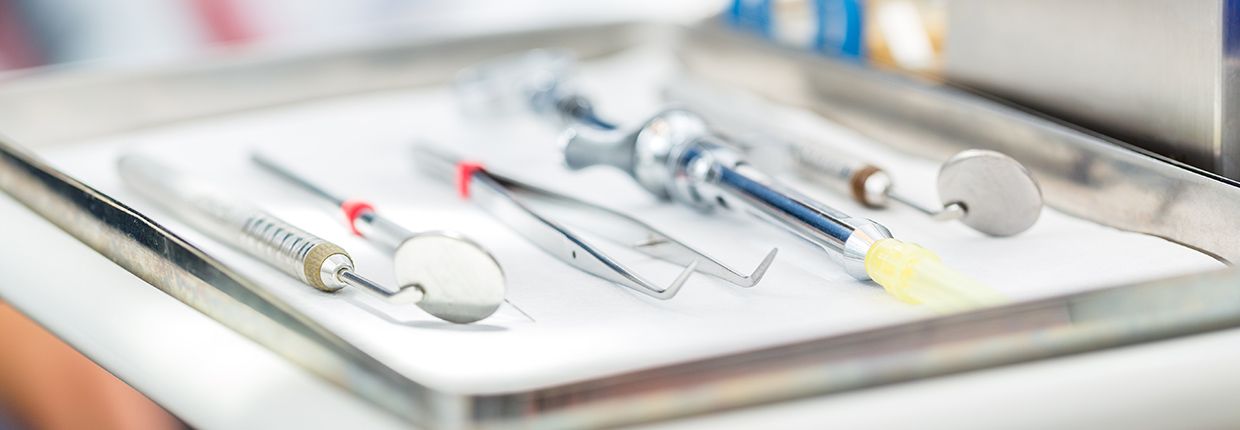Dentists vs Orthodontists: What’s The Difference?
A lot of people have a hard time distinguishing the difference between dentists and orthodontists. Find out here how the two practices differ!

The main similarity between dentists and orthodontists is that they both help their patients improve their oral health. Orthodontics are dentists, however, dentists cannot be said to be orthodontics. Both practitioners have similar backgrounds. Both must attain a bachelor’s degree before applying to dental school. If accepted, they must then undergo a four-year doctoral program.
After graduation, a general dentist may now practice dentistry. Dentists will earn either a D.D.S. ( Doctoral of Dental Surgery) or a D.M.D. (Doctor of Dental Medicine). To become an orthodontist however, the dentist must serve a two or three-year residency in orthodontics. Both practices require extensive schooling before practicing, an orthodontist just requires a few more years of residency.
Dentistry
A dentist is a doctor, scientist, and clinician, dedicated to the highest of standards of health through prevention, diagnosis, and treatment of dental and oral diseases and conditions. Dentists play a key role in the early detection of oral cancer, and other diseases which have symptoms that manifest in the oral cavity.
They also teach their patients regarding proper gum care, and offer services such as:
- Root Canal Treatment - It is usually for those who have teeth with inflamed or infected roots. It is used to help save your tooth from extraction. In the procedure, the nerve and pulp are removed, and the inside of the teeth is cleaned and sealed.
- Cavity Fillings - As the name suggests, this procedure is where the dentist will fill a patient’s cavities. It is a way to restore a tooth damaged by decay back to its normal function and shape.
- Crowns - Dental crown are usually placed over broken, cracked, or damaged teeth to restore their previous size and shape. When cemented into place, crowns encase the entire tooth that lies at and above the gums.
- Veneers - Dental veneers are similar to crowns such that they are also placed over broken, cracked, or damaged teeth. The main difference of the two is that veneers only cover the front of the tooth, as opposed to crowns which encases the entire tooth.
- Bridges - Dental bridges bridge the gap created by one or two missing teeth.
- Teeth Whitening - As implied by the name, this procedure whitens teeth, which may have yellowed over time.
Orthodontics
An orthodontist is the formal name of dental specialists who are concerned with the diagnosis, prevention, interception, guidance, and correction of bad bites. The purpose of an orthodontic treatment is to create a healthy bite. This means that you teeth should be straight so that they can properly meet opposing teeth in the opposite jaw. Although orthodontists may also offer some of the services which a dentist may be able to, their main concern and priority is the correction of bites.
Orthodontists are often associated with children and teens who need their teeth to be corrected, however nowadays, adults also seek treatment to correct long-standing or developmental oral problems. They offer services such as:
- Braces - Dental braces are devices which help align and straighten teeth, and help position them with regards to a person’s bite.
- Invisalign - Invisalign, or clear aligners, are orthodontic devices that are a transparent, plastic form of dental braces. It is also an alternative to metal braces.
- Retainers - Orthodontic retainers are custom-made devices, usually made of wires or clear plastic. Retainers hold teeth in position after surgery or any form of teeth realignment
- Wires - These devices can be found in both braces and retainers.
- Other corrective appliances

Above is a table that shows some of the different services which the two specialties offer. As stated, an orthodontist specializes in the alignment of teeth and jaws using non-surgical procedures. An orthodontist may diagnose, prevent, and treat “malocclusions,” or bad bites. So if ever your dentist notices that the alignment of your teeth or jaws are not ideal, he or she will immediately refer you to an orthodontist to fix your overbite, underbite, gaps or overcrowded teeth.
Do You Need a Dentist or an Orthodontist?
Regardless of whether your toothache is a minor one or not, your oral health should be one of your top priorities. Your mouth is one of the many important organs of your body, and without it, you wouldn’t be able to eat nutritious food which will give you the energy you need to go about your day.
Your primary dental care provider will diagnose, treat, and manage your overall healthcare. A dentist may remove or replace problem teeth, fill cavities, and make models for dentures. However, if the matter is beyond their expertise, your dentist will be sure to refer you to on orthodontist.
Orthodontists and dentists may be hard to differentiate, and you wouldn’t want to mistakenly go to a dentist when you actually need an orthodontist. Here at SeeYouDoc, we offer a thorough filtering process that will surely help you when you’re looking for help in a particular specialty. So what are you waiting for? Here is our list of dentists and orthodontics who will surely offer you A-grade service.
References: The Happy Tooth, ADEA, ADA, AAE
